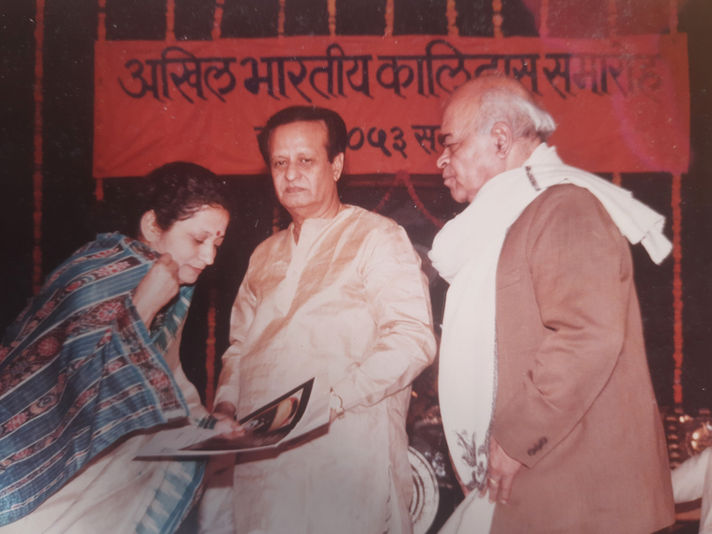
BIOGRAPHY

Pratibha Rane-Wagh is a contemporary Indian fine artist renowned for her work inspired by traditional folk art. Her paintings often depict mythological, rural, and daily life with Madhubani, Warli, and Chitrakathi influences. A veteran in the field, her work and expertise are revered and sought by art connoisseurs worldwide.
She was awarded a scholarship by the Indian Tourism and Cultural Department for her efforts to revive the dying art form of Chitrakathi. Her work adorns the archive of the National Gallery of Modern Art, Mumbai, and the collection of Indian Oil while also being part of other coveted private and public collections.
A true genius with the brushes, she brings forth paintings to life as the colours, imagery and nuanced detailing of her works come together in telling their stories, and drawing you into their world.
Early Life and Education
Pratibha Rane-Wagh was born on 11 May 1955 to renowned cartoonist Late. Bal Rane and Snehlata Rane. Showing exceptional talent and flair for the arts even as a child, her foray into the field was deemed inevitable and was greatly encouraged by her father. The family’s yearly visits to their scenic native in Kankavli in Southwest Maharashtra, sparked an interest in her, prompting her to take up nature and landscape paintings.


Her desire to learn and explore the arts in detail led her to pursue a Master's in History from S.N.D.T College, Mumbai while working simultaneously. After completing her Diploma in Higher Education from the University of Mumbai, she joined the L. S. Raheja School of Art to pursue a Diploma in Art. Following this, she worked as an art teacher at Prarthana Samaj School, Vile Parle for 17 years. Pratibha also worked as a visiting lecturer at the esteemed Sir J. J. School of Art, Mumbai, teaching the History of Arts.
Art Career
Though Pratibha had participated and won in several art competitions, and held her first solo art show at the Pradarshak Art Gallery at Khar, Mumbai in 1996, it wasn’t until winning the 'Kalidas Award for Best Painting,' and 'Maharashtra State Award for Best Painting,' in 1998, was she put on the map.
Following the wins, her paintings were exhibited at the National Gallery of Modern Art, Mumbai (NGMA) propelling her to further heights, popularity and winning many more awards and receiving well-deserved recognition. Since then, she has been a part of numerous group and solo art exhibitions at prominent art galleries, multinational corporations, art melas, festivals, camps and workshops all over the world. Besides, she was also selected as a resource person for New Education Policy in Art, organized by N.C.E.R.T, Delhi by the Directorate of Art (M.S) and N.C.E.R.T, Pune in 1998.
In 2006, the Indian Tourism and Cultural Department offered her the ‘Senior Fellowship in Visual Art’ for the revival of the nearly extinct art form of Chitrakathi. This offered her the chance to explore the Raja Dinkar Kelkar Museum, Pune which has the largest collection of Chitrakathi paintings and leather puppets. There she served as an editor for their ‘Leather Puppets’ catalogue. Her paintings were a part of several government projects that were established to draw tourists to the state of Maharashtra. She has also been a regular contributor on folk art and artists to Loksatta – Chaturanga, a famous Marathi publication, since 2020. She regularly conducts art workshops and camps for senior citizens and children and corporate offices.

Name: Flame of Freedom
Medium: Coloured Ink on Paper
Archived at National Gallery of Modern Art, Mumbai





